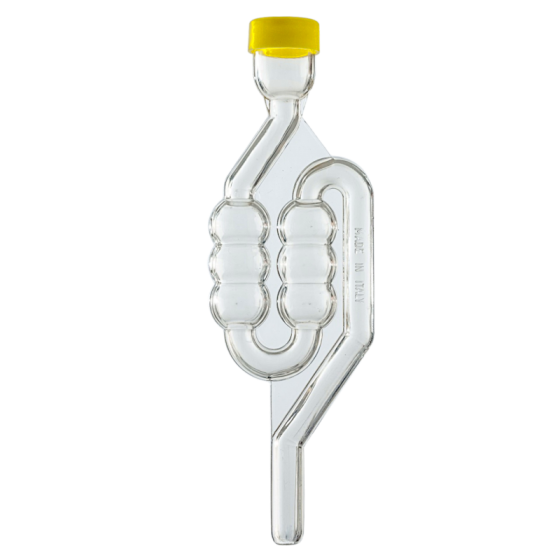Airlock Bubbler For Demijohn
Airlock Bubbler For Demijohn
£1.29
Ex Tax: £1.29
- Stock: 10 In Stock
- 6 Chamber Plastic Airlock Bubbler With Red Cap.
- PLEASE NOTE Due Very High Demand For This Product - Bubblers May Vary Slightly From Those Shown In Picture.
- Used To Allow Gasses To Escape From Your Fermenting Brew Whilst Preventing Airborne Contamination.
- These Airlocks Are Ideal When Fitted In A Rubber Or Cork Bung. - For Buckets Or Fermenter Lids Fitted With Grommets, Handy Airlocks Are More Suitable As They Routinely Achieve a Better Seal
Tony's Tips
"Plastic" Bubbler Airlock (sometimes called Traps) were originally made of Glass. The Plastic ones are as good and for obvious reasons tend to last longer! There are various designs but they all do much the same thing, that is to seal the must from external bacterial contamination whilst allowing the gasses from fermentation to escape. Simply wet the Bored Bungor Grommet if being used in a fermenting bin with cooled, boiled water and insert the Airlock stem, half fill the Chambers with cooled boiled water (some use a Sodium Metabisulphite mix for additional security but if any leaks back into the must it may cause permanent damage to the fermenting process). You can easily view and monitor the fermenting process which will be nearing completion when the bubbles slow or stop. Check the Hydrometer reading before moving to the next step; Secondary Fermentation, Bottling, or for the Anxious Sampler . . . . . Drinking!
"Plastic" Bubbler Airlock (sometimes called Traps) were originally made of Glass. The Plastic ones are as good and for obvious reasons tend to last longer! There are various designs but they all do much the same thing, that is to seal the must from external bacterial contamination whilst allowing the gasses from fermentation to escape. Simply wet the Bored Bungor Grommet if being used in a fermenting bin with cooled, boiled water and insert the Airlock stem, half fill the Chambers with cooled boiled water (some use a Sodium Metabisulphite mix for additional security but if any leaks back into the must it may cause permanent damage to the fermenting process). You can easily view and monitor the fermenting process which will be nearing completion when the bubbles slow or stop. Check the Hydrometer reading before moving to the next step; Secondary Fermentation, Bottling, or for the Anxious Sampler . . . . . Drinking!

